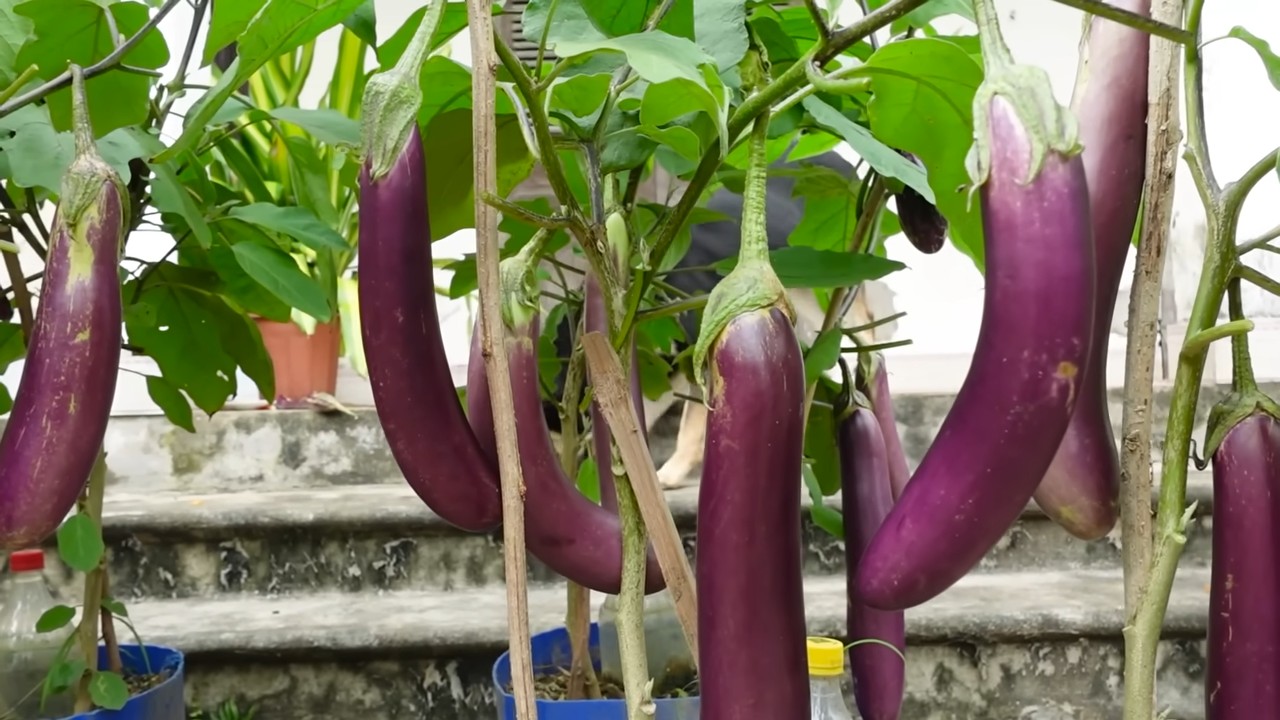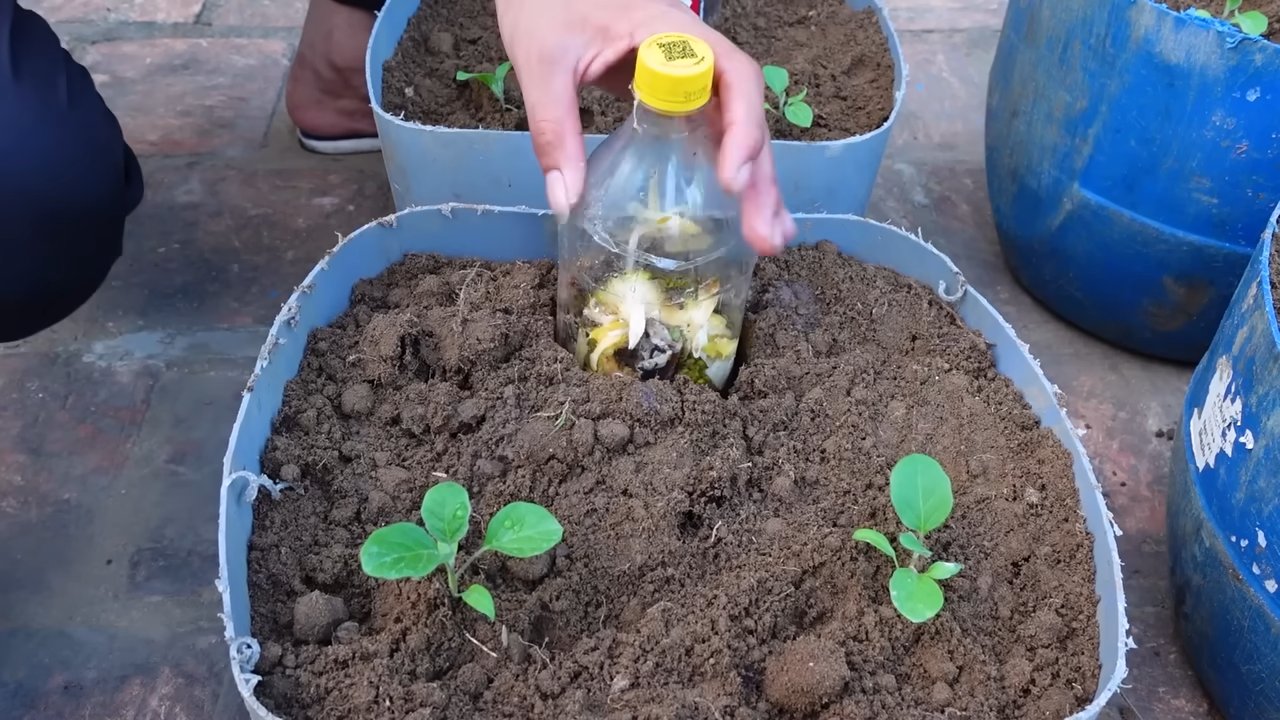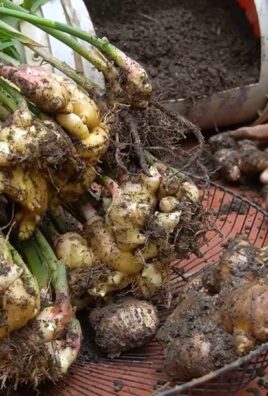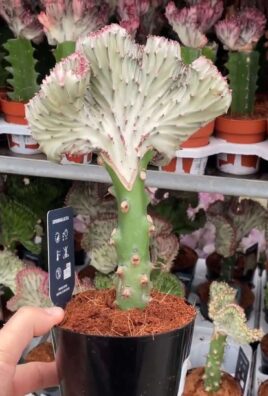Grow Eggplants for Maximum Yield – and unlock the secrets to a bountiful harvest right in your own backyard! Have you ever dreamt of plucking plump, glossy eggplants straight from your garden, ready to be transformed into delicious Mediterranean feasts or hearty vegetarian dishes? I know I have! But let’s be honest, sometimes growing eggplants can feel like a bit of a gamble. They can be finicky, demanding, and leave you wondering if you’ll ever see more than a few measly fruits.
Eggplants, also known as aubergines, have a rich history, dating back thousands of years to ancient Asia. They were initially cultivated for their medicinal properties before becoming a culinary staple. Today, they’re enjoyed worldwide in countless cuisines. But regardless of where you are, the key to a successful eggplant harvest lies in understanding their specific needs and employing a few clever tricks.
That’s where this DIY guide comes in! I’m going to share my tried-and-true methods to help you grow eggplants for maximum yield. We’ll delve into everything from choosing the right varieties and preparing your soil to mastering watering techniques and tackling common pests. Why struggle with disappointing harvests when you can easily learn these simple yet effective hacks? Imagine the satisfaction of sharing your homegrown eggplants with friends and family, knowing you nurtured them from seed to table. Let’s get started and transform your garden into an eggplant paradise!

Grow Eggplants for Maximum Yield: My Foolproof Guide
Hey there, fellow gardening enthusiasts! I’m so excited to share my secrets for growing plump, juicy eggplants that will make your neighbors green with envy. I’ve spent years experimenting, tweaking, and learning from my mistakes (and successes!), and I’m confident that this guide will help you achieve a bumper crop of these beautiful, versatile veggies. Let’s dive in!
Choosing the Right Eggplant Variety
First things first, you need to pick the right eggplant variety for your climate and preferences. There are so many options out there, from the classic globe-shaped ‘Black Beauty’ to the slender Japanese varieties like ‘Ichiban’ and the colorful ‘Fairy Tale’.
* Climate Considerations: If you live in a cooler climate with a shorter growing season, opt for early-maturing varieties like ‘Early Black Egg’ or ‘Dusky’. These will give you a head start and ensure you get a harvest before the first frost. If you’re in a warmer region, you have more flexibility and can experiment with longer-season varieties.
* Size and Shape: Consider how you plan to use your eggplants. If you love grilling, the larger globe varieties are perfect. For stir-fries and Asian dishes, the slender Japanese types are ideal.
* Disease Resistance: Look for varieties that are resistant to common eggplant diseases like Verticillium wilt and Fusarium wilt. This will save you a lot of headaches down the road.
* My Personal Favorites: I’ve had great success with ‘Black Beauty’ (reliable and productive), ‘Ichiban’ (delicious and beautiful), and ‘Listada de Gandia’ (striking purple and white stripes!).
Starting Eggplant Seeds Indoors
Eggplants need a long growing season, so starting them indoors is crucial, especially if you live in a cooler climate. I usually start my seeds about 8-10 weeks before the last expected frost.
1. Gather Your Supplies: You’ll need seed starting trays or pots, a good quality seed starting mix, eggplant seeds, a heat mat (optional but highly recommended), and a grow light.
2. Sow the Seeds: Fill your trays or pots with the seed starting mix. Make a small indentation (about ¼ inch deep) in the center of each cell or pot. Place one or two seeds in each indentation and gently cover with the mix.
3. Water Gently: Water the seeds thoroughly but gently, using a spray bottle or watering can with a fine rose. You want to moisten the soil without disturbing the seeds.
4. Provide Warmth: Eggplant seeds need warmth to germinate. Place the trays or pots on a heat mat set to around 80-85°F (27-29°C). If you don’t have a heat mat, you can place them in a warm spot in your house.
5. Maintain Moisture: Keep the soil consistently moist but not soggy. Check the moisture level daily and water as needed.
6. Provide Light: Once the seedlings emerge (usually in 7-10 days), remove them from the heat mat and place them under a grow light. Position the light a few inches above the seedlings and keep it on for 14-16 hours per day.
7. Thin the Seedlings: If you planted two seeds per cell or pot and both germinate, thin them out by snipping off the weaker seedling at the soil line. This will give the remaining seedling more room to grow.
8. Pot Up: Once the seedlings have developed a few sets of true leaves (the leaves that look like miniature eggplant leaves), transplant them into larger pots (about 3-4 inches in diameter). Use a good quality potting mix.
Hardening Off Your Eggplant Seedlings
Before transplanting your eggplant seedlings outdoors, you need to harden them off. This process gradually acclimates them to the outdoor environment, preventing shock and ensuring they thrive.
1. Start Slowly: Begin by placing the seedlings outdoors in a sheltered location (like a porch or patio) for just an hour or two on the first day.
2. Gradually Increase Exposure: Each day, gradually increase the amount of time the seedlings spend outdoors, exposing them to more sunlight and wind.
3. Protect from Extreme Conditions: If the weather is particularly harsh (strong winds, heavy rain, or extreme temperatures), bring the seedlings back indoors.
4. Monitor for Stress: Watch for signs of stress, such as wilting or leaf burn. If you see these signs, reduce the amount of time the seedlings spend outdoors.
5. After a Week or Two: After a week or two of hardening off, your eggplant seedlings should be ready to be transplanted into the garden.
Preparing the Garden Bed
Eggplants are heavy feeders, so preparing the garden bed properly is essential for a successful harvest.
1. Choose a Sunny Location: Eggplants need at least 6-8 hours of direct sunlight per day. Choose a location that gets plenty of sun.
2. Improve the Soil: Eggplants prefer well-drained, fertile soil with a pH of 6.0-7.0. Amend the soil with plenty of compost or well-rotted manure to improve drainage and fertility. I like to add a generous amount of compost – at least 4-6 inches!
3. Consider Raised Beds: If your soil is heavy clay or poorly drained, consider growing eggplants in raised beds. This will improve drainage and provide a warmer growing environment.
4. Test the Soil: A soil test can tell you the pH and nutrient levels of your soil. This will help you determine what amendments are needed.
5. Add Fertilizer: Incorporate a slow-release fertilizer into the soil before planting. Choose a fertilizer that is high in phosphorus, which promotes root development.
Transplanting Eggplant Seedlings Outdoors
Once the danger of frost has passed and the soil has warmed up, it’s time to transplant your eggplant seedlings into the garden.
1. Choose a Cloudy Day: Transplanting on a cloudy day will help reduce stress on the seedlings.
2. Dig Holes: Dig holes that are slightly larger than the root balls of the seedlings. Space the holes about 2-3 feet apart.
3. Gently Remove Seedlings: Gently remove the seedlings from their pots, being careful not to damage the roots.
4. Place Seedlings in Holes: Place the seedlings in the holes, making sure the top of the root ball is level with the soil surface.
5. Fill with Soil: Fill the holes with soil and gently firm around the base of the seedlings.
6. Water Thoroughly: Water the seedlings thoroughly after transplanting.
7. Mulch: Apply a layer of mulch around the plants to help retain moisture, suppress weeds, and regulate soil temperature. I like to use straw or shredded leaves.
8. Stake or Cage: Eggplants can get quite heavy with fruit, so it’s a good idea to stake or cage them to provide support. This will prevent the branches from breaking and keep the fruit off the ground.
Caring for Your Eggplant Plants
Proper care is essential for maximizing your eggplant yield.
1. Watering: Water your eggplant plants regularly, especially during hot, dry weather. Aim to keep the soil consistently moist but not soggy. Water deeply and less frequently, rather than shallowly and often.
2. Fertilizing: Eggplants are heavy feeders and benefit from regular fertilization. Side-dress the plants with a balanced fertilizer every 2-3 weeks. You can also use a liquid fertilizer, such as fish emulsion or seaweed extract.
3. Weeding: Keep the garden bed free of weeds, which can compete with the eggplants for nutrients and water.
4. Pest Control: Eggplants are susceptible to several pests, including flea beetles, aphids, and tomato hornworms. Monitor your plants regularly for signs of infestation and take action promptly. I prefer using organic pest control methods, such as insecticidal soap or neem oil.
5. Pruning: Pruning can help improve air circulation and encourage fruit production. Remove any suckers (small shoots that grow from the base of the plant) and any yellowing or diseased leaves.
6. Pollination: Eggplants are self-pollinating, but they benefit from a little help. Gently shake the plants or use a small brush to transfer pollen from one flower to another. This is especially important in hot, humid weather, when pollination can be less efficient.
Harvesting Your Eggplants
Knowing when to harvest your eggplants is crucial for getting the best flavor and texture.
1. Check for Size and Color: Eggplants are typically ready to harvest when they are about two-thirds of their mature size and have a glossy, vibrant color.
2. Press Gently: Gently press the eggplant with your finger. If it feels firm but slightly yielding, it’s ready to harvest. If it’s hard and unyielding, it’s

Conclusion
So, there you have it – the secrets to maximizing your eggplant yield! This isn’t just about planting a seed and hoping for the best; it’s about understanding the eggplant’s needs and providing the optimal environment for it to thrive. From choosing the right variety and starting seeds indoors to providing consistent watering, proper fertilization, and diligent pest control, every step plays a crucial role in achieving a bountiful harvest.
This DIY approach to growing eggplants isn’t just a fun project; it’s a game-changer for anyone serious about home gardening. Imagine the satisfaction of harvesting plump, glossy eggplants that you nurtured from tiny seedlings. Think of the delicious meals you can create with your homegrown produce – from classic eggplant parmesan to smoky baba ghanoush and flavorful curries. The possibilities are endless!
But the benefits extend beyond just the culinary. Gardening is a therapeutic activity that connects us with nature, reduces stress, and provides a sense of accomplishment. Growing your own eggplants allows you to control the quality of your food, ensuring it’s free from harmful pesticides and packed with nutrients. Plus, it’s a sustainable practice that reduces your carbon footprint and supports local food systems.
Don’t be afraid to experiment with different varieties of eggplants to find your favorites. Try growing classic Italian eggplants, slender Japanese eggplants, or even the vibrant Thai green eggplants. You can also explore different growing techniques, such as container gardening or vertical gardening, to maximize your space and create a visually stunning garden. Consider companion planting with herbs like basil or marigolds to deter pests and enhance the flavor of your eggplants.
This DIY trick to grow eggplants for maximum yield is a must-try for any gardener looking to elevate their harvest. It’s a rewarding experience that will not only provide you with delicious, homegrown produce but also connect you with nature and enhance your overall well-being.
We encourage you to give these techniques a try and see the difference they can make in your eggplant yield. Don’t be discouraged if you encounter challenges along the way – gardening is a learning process, and every season brings new opportunities to improve.
Most importantly, share your experiences with us! We’d love to hear about your successes, challenges, and any tips or tricks you’ve discovered along the way. Post photos of your bountiful harvests, share your favorite eggplant recipes, and connect with other gardeners in our community. Together, we can learn and grow and create a world filled with delicious, homegrown food. So, grab your gardening gloves, plant some eggplant seeds, and get ready for a season of abundance!
Frequently Asked Questions (FAQ)
Q: What is the best time to start eggplant seeds indoors?
A: The ideal time to start eggplant seeds indoors is typically 6-8 weeks before the last expected frost in your area. This allows the seedlings to develop a strong root system before being transplanted outdoors. Check your local weather forecasts and gardening resources to determine the average last frost date for your region. Starting seeds indoors gives them a head start, especially in areas with shorter growing seasons.
Q: How much sunlight do eggplants need?
A: Eggplants are sun-loving plants and require at least 6-8 hours of direct sunlight per day to thrive. Choose a planting location that receives ample sunlight throughout the day. If you’re growing eggplants in containers, make sure to place them in a sunny spot on your patio or balcony. Insufficient sunlight can lead to stunted growth, reduced fruit production, and increased susceptibility to pests and diseases.
Q: What type of soil is best for growing eggplants?
A: Eggplants prefer well-drained, fertile soil that is rich in organic matter. The ideal soil pH is between 6.0 and 7.0. Before planting, amend your soil with compost, aged manure, or other organic materials to improve its structure, drainage, and nutrient content. Avoid planting eggplants in heavy clay soil, as it can become waterlogged and inhibit root growth. If you have clay soil, consider growing eggplants in raised beds or containers with a well-draining potting mix.
Q: How often should I water my eggplants?
A: Eggplants need consistent watering, especially during hot, dry weather. Water deeply and regularly, aiming to keep the soil consistently moist but not waterlogged. Avoid overhead watering, as it can promote fungal diseases. Instead, water at the base of the plant using a soaker hose or drip irrigation system. Mulching around the plants can help retain moisture in the soil and reduce the need for frequent watering. Check the soil moisture regularly by sticking your finger into the soil – if the top inch feels dry, it’s time to water.
Q: What are some common pests and diseases that affect eggplants?
A: Eggplants are susceptible to various pests and diseases, including aphids, flea beetles, spider mites, blossom-end rot, and fungal diseases like verticillium wilt and fusarium wilt. Regularly inspect your plants for signs of pests or diseases and take action promptly to prevent them from spreading. Use organic pest control methods, such as insecticidal soap, neem oil, or diatomaceous earth, to control pests. Ensure good air circulation around the plants to prevent fungal diseases. Choose disease-resistant varieties of eggplants whenever possible.
Q: How do I prevent blossom-end rot in eggplants?
A: Blossom-end rot is a common problem in eggplants caused by a calcium deficiency. To prevent blossom-end rot, ensure that your soil has adequate calcium levels. You can amend your soil with lime or bone meal before planting. Also, maintain consistent watering to prevent fluctuations in soil moisture, which can interfere with calcium uptake. Avoid over-fertilizing with nitrogen, as it can inhibit calcium absorption. If you notice blossom-end rot on your eggplants, you can apply a foliar spray of calcium chloride to help correct the deficiency.
Q: When is the right time to harvest eggplants?
A: Eggplants are typically ready to harvest when they are firm, glossy, and have reached their mature size. The skin should be smooth and unblemished. Gently press the eggplant with your finger – if it gives slightly, it’s ripe. Use a sharp knife or pruning shears to cut the eggplant from the plant, leaving a short stem attached. Overripe eggplants will become dull, soft, and bitter. Harvest eggplants regularly to encourage continued fruit production.
Q: Can I grow eggplants in containers?
A: Yes, eggplants can be successfully grown in containers, especially if you have limited space or poor soil conditions. Choose a large container that is at least 12-18 inches in diameter and has good drainage holes. Use a high-quality potting mix that is well-draining and rich in organic matter. Provide adequate sunlight, water, and fertilizer to ensure healthy growth. Container-grown eggplants may require more frequent watering and fertilization than those grown in the ground.
Q: What are some good companion plants for eggplants?
A: Companion planting can benefit eggplants by attracting beneficial insects, deterring pests, and improving soil health. Some good companion plants for eggplants include basil, marigolds, thyme, oregano, and peppers. Basil repels aphids and other pests, while marigolds deter nematodes and other soil-borne pests. Thyme and oregano attract beneficial insects that prey on pests. Peppers can help protect eggplants from certain diseases. Avoid planting eggplants near fennel, as it can inhibit their growth.





Leave a Comment